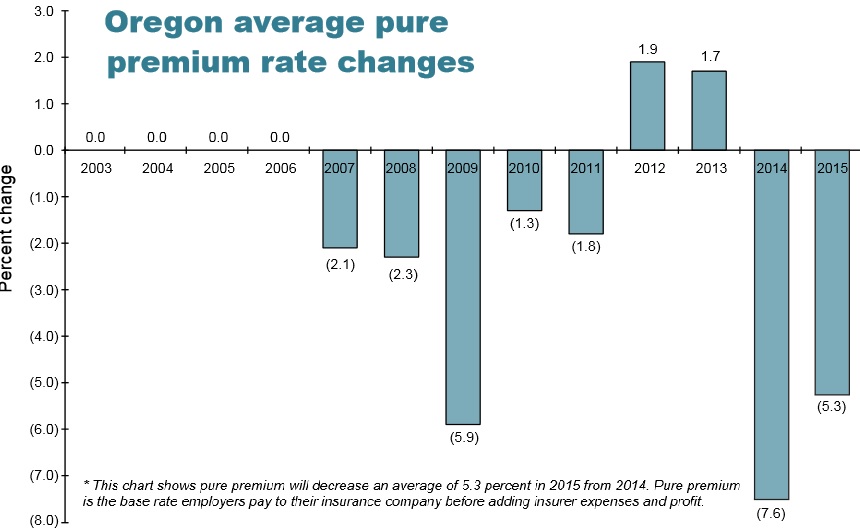Department of Consumer and Business Services
Workers’ compensation costs to drop for second-straight year
Oregon workers’ compensation costs will decrease an average 5.3 percent in 2015, the Department of Consumer and Business Services (DCBS) announced this month.
The department approved the average decrease in “pure premium,” which is the portion of the premium employers pay insurers to cover anticipated claims costs for job-related injuries and deaths.
Workers’ compensation pays injured workers for lost wages and medical care for job-related injuries. Lower average costs in both of those areas are driving down the pure premium for the second-straight year.
“Oregon’s strong commitment to workplace safety and health continues to keep costs low for businesses,” said Patrick Allen, DCBS director. “Efforts to control medical costs and get workers back to work faster also have contributed to rate decreases in the past two years.”
The decrease is based on a recommendation from the Florida-based National Council on Compensation Insurance Inc. (NCCI), which analyzes industry trends and prepares rate recommendations for the majority of states. Pure premium reflects only a portion of workers’ compensation costs but is the key factor behind annual cost changes. The decrease is an average, so an individual employer may see a larger decrease, no change, or even an increase depending on the employer’s own industry, claims experience, and payroll. Also, pure premium doesn’t take into account the varying expenses and profit of insurance companies.
The rate decrease is effective Jan. 1, 2015, but employers will see the changes when they renew their policies in 2015.
Oregon’s workers’ compensation premium rates have ranked low nationally for many years. Only 11 states and the District of Columbia had average rates lower than Oregon at the beginning of 2012, according to a biennial study conducted by DCBS. The department will release a new study ranking states’ 2014 workers’ compensation costs in October.
In addition to any change in pure premium, other workers’ compensation costs reviewed annually by the department include:
• An assessment on workers’ compensation premiums to fund the state costs of running workers’ compensation and safety and health programs.
• An assessment on hours worked to fund Oregon’s highly successful return-to-work programs that help injured workers return to work quickly and earn close to their pre-injury wages. This assessment also provides increased benefits over time for workers who are permanently and totally disabled, and gives benefits to families of workers who die from workplace injuries or diseases.
The following chart summarizes all the changes.
Disclaimer: Articles featured on Oregon Report are the creation, responsibility and opinion of the authoring individual or organization which is featured at the top of every article.



